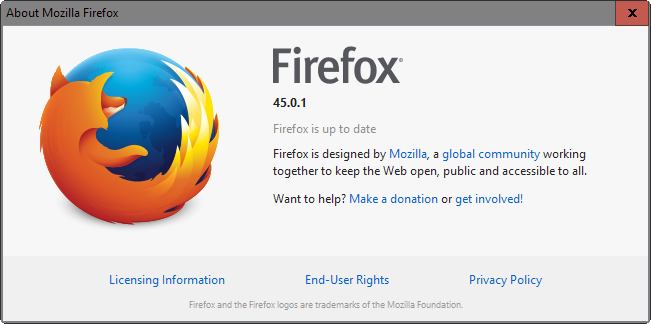Nebula 3 Pro Mac Download
If you like Nebula's included preset library, you will really love these! Inside this bundle you will find: - Nebula3 Free (CoreII Engine): the free VST multi-effect plug-in - N.A.T.3 free: the free FX Sampler - The free library: small, fully-functional preset library.
I love Nebula. It has changed everything about my recordings by giving me access to tools that I would in all likelihood never have otherwise. It also required me to get a whole new computer, changed my workflow in a way that might not be considered beneficial, and caused hours of aggravation learning its ins and outs… and I’m still pretty new at it.
I’m not going to explain what it is or why it rules cause you can do that very easily yourself. Go to http://www.acustica-audio.com and read. The purpose of this post is to help those who are new to Nebula get started as quickly as possible. The installation procedure is kind of weird, registration is weird, tweaking is weird, usage is weird. But the results make everything worth it.
So first, some basics.
You should make sure to understand all of these before moving on.
Nebula is the platform in which your libraries are loaded. By itself, it doesn’t do anything. Think of it as a container and the libraries go inside of it to make it do something.
The default location is c:nebulatemprepository on Windows. I believe that Mac creates a folder of that same name either right in the Applications folder or in your home directory. Someone will have to check on that for me.
The free version of Nebula 3 is not as powerful as Nebula 3 Pro. Just buy Pro in the beginning and save yourself some trouble.
Some libraries will not work with the free version. Buy Pro in the beginning and save yourself some trouble.
ALWAYS USE THE REVERB VERSION unless you want to track with effects and latency is an issue. Really. Always. For everything. Stupid misnomer.
Installation
Download the version that matches your DAW software. 32-bit Cubase, 32-bit Nebula. If you’re running 32-bit software in a 64-bit operating system, invest in a VST Bridge (I use jBridge) so you can leverage more than 4GB of RAM.
Install Nebula. Accept all defaults.
Insert the Reverb version of Nebula on a track. The big difference between the standard and reverb versions is that reverb allows for longer tails and has greater latency. The standard version uses a shockingly higher amount of CPU. Use reverb. Always.
After you run it for the first time, it creates a .SER file in your nebulatemprepository file. Get this and email it to Giancarlo to register your copy. Do yourself another favor here and immediately post to the message board or PM him to give him a heads up that a registration is waiting in queue. This will probably speed up the process.
He will email you an EXE file. Run this and it inserts a few files into your folder that tell the application that you registered.
First Run
Once again, always start by using the Reverb version of the plugin.
Start by clicking on the word “Init” to bring up the libraries menu. Pick an EQ. The word “Init” changes to whatever patch you selected. Directly below that is a description if one exists. Directly below that it says something like this:
FRT: 96000 Hz -> 48000 Hz
The first number is the frequency at which the patch was sampled, the second number should be the frequency at which you are operating. The arrow in the middle should be solid, not flashing. If this is all the case, than all is well. In all likelihood, the two numbers will be the same and the arrow will be flashing, which means that it is not changing the sample rate correctly and will therefore not sound right. Click the MAST button at the bottom of the pseudo-LCD and change the RATE CNV to something like 7000. Hit the SAVE button (top right on MAST) then go back to PROG (your program controls) and then RELOAD (top right again.) The two numbers should be the same. Make sure to check this, very important!
Next, actually using it. The key to getting the most out of Nebula is gain staging. We kind of get spoiled in the digital world because clipping doesn’t occur within our DAW, so a single channel can hit +7 or greater and it really doesn’t matter as long as your output channel doesn’t clip. Because Nebula libraries are essentially clones of hardware devices, they do clip, so you need to ensure that you never go above 0db. Not ever. With some libraries, clipping will result in a really BRUTAL digital beep that can hurt your speakers and ears.
From the PROG page, you can tell the input level by looking at the INPUT L value. The magic number is -18 DB. Try to keep an average gain around there with peaks between -12 and -6. If it’s too low, use the INPUT nob. Too loud, use OUTPUT. I use the Sonalksis FreeG plugin if I want better gain staging control, one before and one after Nebula.
Something to watch out for is the confusing NORMAL vs ECONO thing. On the PROG page is a button that says ECONO when everything is working normally. If you click it, it changes to NORMAL and has a flashing dot. If you see this, you are operating in ECONO mode, meaning you are not operating the way the patch was intended. Some libraries mistakenly have ECONO mode enabled by default (cough 165a cough) and you might not notice. The effects of this differ from program to program but run in NORMAL mode by making sure it always says ECONO.
With that all said, the rest is rather self-explanatory. EQs are typically one band per instance of the plugin. This is because of the greater resources that are needed for multiple bands within a single patch. Need another band? Add another instance of Nebula. There are some libraries with multi-band EQ — Fate EQ and Mammoth EQ both have some. Fate’s Kick EQ in particular is killer! I’d say that in terms of worth, Nebula’s biggest assets for me are consoles and then EQ. The consoles alone are worth the entry price.
Don’t expect to use a lot of these plugins while tracking or editing. Get in the habit of applying settings, bouncing files, and importing with the effect burned to the track. Specifically console inputs on your channels and tape saturation.
My Favorite Libraries and Some Notes
Buy these.
Content-Aware Move Tool now moves the weather more precisely, Crop tool lets the users change the form without much workaround. Adobe photoshop 2017 crack download.
COMPRESSORS: Fate Compressor and Snap Compressor (this one ESPECIALLY! SSL buss comp, sound better than Waves and The Glue) from Analog in the Box, Rhythm in Mind’s 165a.
EQ: AlexB’s CLeQ and MLeQ are my go-to, Analog in the Box’s Fate and Mammoth EQ are both fantastic as well.
CONSOLE: AlexB’s CLC, MLC, MWC, and MBC are all amazing, find one that works for you. CLC is a good place to start, especially if you’re doing rock.
TAPE: CDsoundmaster.com’s R2R and Tape Booster+ are absolutely essential. I also suggest their VTM-M2 VST plugin, which is probably my choice for favorite plugin ever.
REVERB and DELAY: I’ve never been a big reverb guy though this is an area that’s supposedly one of Nebula’s greatest strengths. I use one that has a name I just never remember… It’s a Plate Reverb. VXNT-something-or-other. I also just a minute ago discovered this, which is likely to get a TON of use by me. You’ll see one particularly enthused comment on that page… 😉
That will set you back a couple hundred bucks and arm you with practically everything you could ask for. I find myself using a few other compressors cause Nebula can be a little weird with fast transients but everything else is unreal.
The recommended usage of consoles and tape saturation looks like this:
CONSOLE MIC INPUT
R2R (depends on the source for me – almost always for drums, usually for guitars, sometimes for bass)
TB+ (again, depends on the source)
VTM-M2 (always)
CONSOLE LINE INPUT
I’ll very often just do VTM-M2 and then console mic input.
Buss groups have the appropriate buss group console program. Master always has a console master buss program. While some of these might be subtle by themselves, they make a huge difference when put together.
That’s it for now. If you see mistakes, please correct me. This will hopefully get you going.
The latest stable version: 2.6 (Windows x86/x64, Mac OS X x64)
Note: Nebula Setups 2 is NOT compatible with N4 (Nebula 4).
Nebula Setups 2 is a 2nd generation tool for making a customized versions of Nebula plugin (so called “setups”). For each setup, desired Nebula programs and skin can be selected (for example, you can have one Nebula plugin version with tape programs, the other with consoles etc.). In addition to the powerful features like Setup tracking, Setups Manager, Tweaks, ACQUA Plugins manager etc., now preview of the setup’s VST plugin is possible inside Nebula Setups.
For using different appropriate skins, you need to create multiple .dll and xml files, each .dll and xml file should exactly the same name. For superior and easy control over this get Zabukowski’s Nebula setups.
Tim Petherick (3rd party Nebula programs developer – http://www.timpetherick.co.uk/)
Nebula 3 Pro Mac Download Windows 10
“Dude! This thing rocks! Between your software and the Logic Pro X plug-in manager, Nebula3 has just jumped up to a whole new level for me! Thank you x100!
Cheers, Paul“
***
Downloads – stable release:
Nebula Setups 2.6 for Windows (32 bit)
Nebula Setups 2.6 for Windows (64 bit)
Nebula Setups 2.6 for Mac OSX (64 bit)
Download Nebula Emulator

Other downloads:
License file (use mouse right-click and “Save as …” option)
To complete the registration procedure, save license file to a temporary folder of your choice, run Nebula Setups 2 and select menu option ‘Help / About Nebula Setups’ on Windows or ‘Nebulasetups2 / About Nebulasetups2’ on Mac OS X. A license information dialog will show up. Click on the ‘Install license’ button and select the previously saved license file from your temporary folder. When the license is imported, its data is displayed in the dialog window.
The same license file works on all supported operating systems. You can install your license on any computer, which has your licensed copy of Nebula software installed.
Nebula Setups 2 Version History PDF
Nebula Setups 2 User’s Manual PDF (updated to 2.6)
Nebula Setups (AU /Logic X Pro)
Mac OS X installer
VST Setup preview
Setups Manager
Nebula 3 Pro Mac Download Torrent
Nebula Setups (VST) in action (screenshot kindly provided by Martin Walker)
